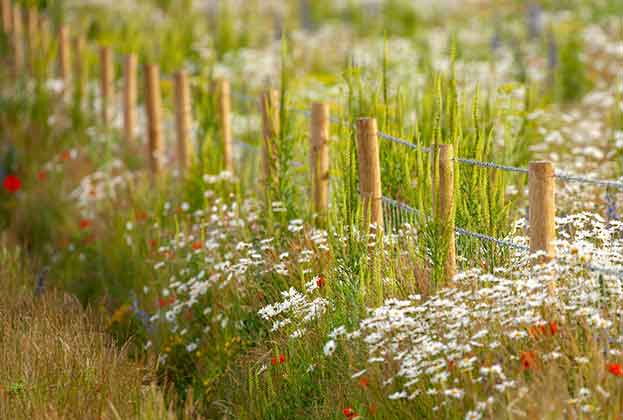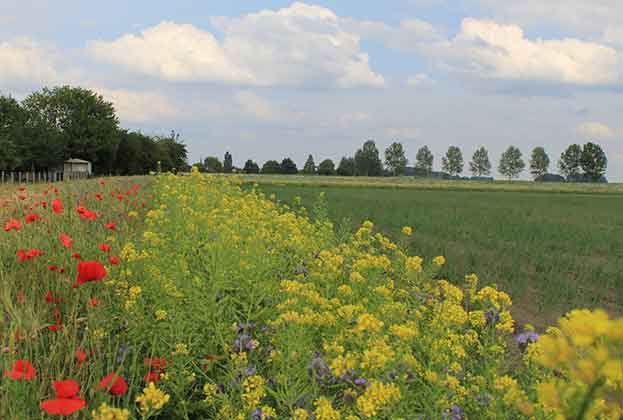To achieve nature-based targets, a new level of collaboration and partnership is required between landlords and their tenants
Land ownership motivations are changing, requiring a rethink in relationships with tenants. Many traditional institutional investors in land, such as pension funds, charities and public bodies, have made net zero pledges, but they are also facing tougher environmental regulation and social accountability. Owners are being nudged out of traditional “financial only” investment approaches into becoming responsible or even sustainable investors by new disclosure requirements (see figure 9). These frameworks are challenging rural asset owners to start thinking about what services they might be able to supply both to other parts of their business or to third parties. For many, this will mean a rethink in their relationship with their tenants.
Getting down to business
Many rural asset investors will be operating a mostly tenanted land model, offering opportunities to farmers to specialise in running land-based businesses without the expense of buying land. Tenancy structures offer a level of security to farmers to run independent businesses. However, a standard net zero carbon assessment for the landowner will include the emissions from the tenant farmer. Rural asset owners are therefore beginning to look at how they can work more closely with tenant farmers to reduce impacts and in some cases start to become net sequesterers of carbon.
Carbon is not the only nature-based solution of interest though. Food itself is the foundation on which our economy is fuelled, and without clean air and water, and space for nature to thrive, we cannot function as a society. The challenge is therefore to avoid “carbon myopia” and to set a strategy for rural land ownership that accounts for and manages all of these services in partnership with the occupier of the land.
Valuing impacts
The total societal income and costs from the occupation of land can be assessed through environmental economics. The graphs below, created by Savills Impacts team, indicate the comparative performance of a 395 hectare farm under a more environmentally-focused management protocol.
- Farm facts: 395 hectare, of which 200 hectare cereals, 25 hectare temporary grass, 40 hectare permanent grass, 130 hectare rough grazing. In the alternative scenario, there is no change to these areas but the farm is managed in accordance with regenerative agriculture principles. The total value of the baseline scenario is £34,800 per year, and the alternative scenario increases to £66,700.
It is clear from this type of analysis that the total financial, economic and social value from agriculture can be substantially improved by considering environmental outcomes. The negative “costs to society” of carbon used in national estimates is up to £150 per tonne, and around £34 for each kg of nitrogen lost to water systems. The financial returns available from the market in food prices or rent can be low but should improve over time as soil health recovers. By including the positive value of services such as flood prevention and air pollution removal and by reducing the negative costs of nitrate pollution and greenhouse gas emissions through management changes or investment, a positive balance can be improved, or a negative balance corrected.
So how do rural asset owners rectify the balance of private and public goods provided on farms? Taking land back in-hand to maximise environmental returns might not be the right option for every owner (see figure 12). Most landlords will need to establish how they intend to work with their farmers to achieve new targets and expectations. This may require a level of collaboration and partnership that has not previously been present, particularly with pre-existing tenancies. Tenant farmers can be permitted to participate in private markets and public schemes under their occupation agreement. However, if the landlord wishes to claim the benefit of any natural capital improvements, it is in their best interests to fund the transition and measure the outcomes.

Juice Flair / Shutterstock
FULL DISCLOSURE
The Taskforce on Climate Related Financial Disclosures was created in 2015 by the Financial Stability Board to develop consistent climate-related financial risk disclosure for use by companies, banks and investors. In the UK it will become mandatory for companies to report on their climate-related risk by 2025. The Taskforce on Nature Related Financial Disclosures seeks to do the same thing, but for nature-related risks. The framework is currently in a pilot stage. Disclosure will mean that environmentally-damaging businesses become less desirable to investors and will find it harder to raise finance, driving exposed companies to reduce their negative environmental and social impacts.
Read the articles within Spotlight: Nature-based solutions below.
FURTHER INFORMATION
.jpg)


